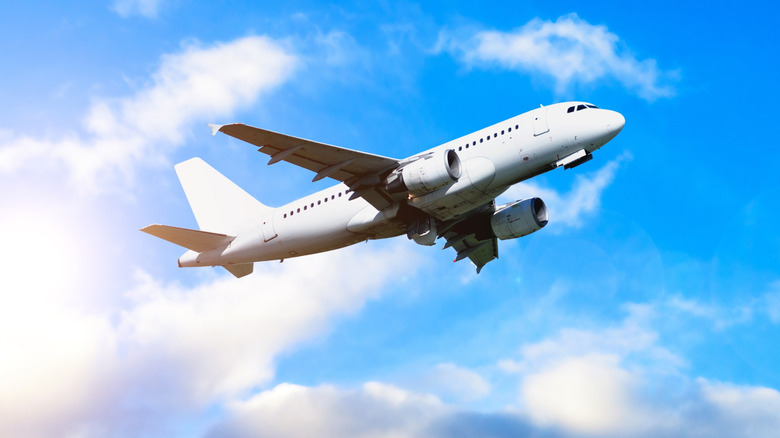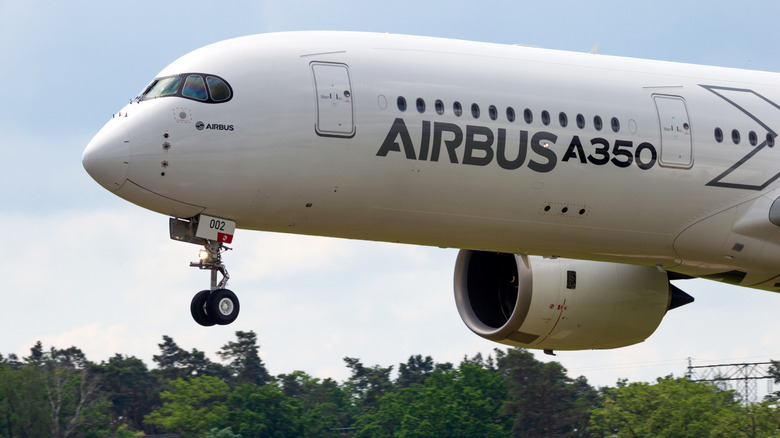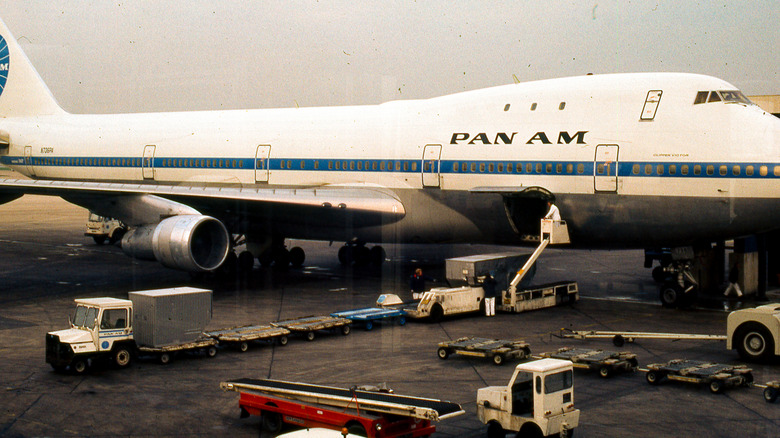This Iconic Airline Is Making A Comeback. Here's What Travelers Should Know
You may have heard about some things airlines used to do, but are no longer allowed to continue for certain reasons. Of course, such things don't usually catch people's interest, unless curiosity gets the better of them. However, some news stories are far more captivating, often because of the nature of their headlines. Imagine reading a headline that says a popular airline plans to cease operations. There's about a high chance you'd want to read more about it.
Well, that was once the case for Pan American World Airways — the iconic airline long credited as a symbol of glamour, innovation, and global connectivity. Pan Am announced that it would stop operations — and it did. But now, after more than 30 years, the airline is finally making plans for a comeback.
Pan Am was once the face of international air travel, owing a lot to their unique service, and the fact that they operated on a global scale when it came to routes. Although the original carrier folded in 1991, the name and logo never fully left the public mind. Those people can now start rejoicing, as it seems a carefully staged revival is now on its way. Pan Am has partnered with aviation firm Avi8 Air Capital to look into the idea of relaunching Pan Am as a scheduled U.S. carrier. This is by no means a baby step, and isn't it about time you started seeing the airline in operation, more than as a logo on a T-shirt? The possibility is now getting higher. And for the record, Pan Am was up there among the most luxurious airlines you can fly. It's one of those airlines that could make your vacation travel less stressful.
What the current situation is; what's actually going on
Avi8 Air Capital has announced that it has completed a comprehensive review of the business plan, and it has started the certification process with the U.S. Federal Aviation Administration (FAA). The multi-phase regulatory path required for scheduled airlines has also been cleared. That means the team is working towards more than just one-off charters, as the step indicates more regular flights are the target.
Certification doesn't come as swiftly as the wind; it may take time because it requires approvals from both the FAA and DOT. Also, the airline is planning on using Airbus aircraft, although the exact models have not yet been revealed. Pan Am is looking at Miami as its intended headquarters. But details concerning schedules have also not been revealed, and that's because those usually appear later in the certification or aircraft-leasing phase.
The Pan Am name is already being used for exclusive luxury trips that celebrate the "golden age" of air travel even though the airline has not officially returned to scheduled flights. One instance of this is the "Tracing the Transatlantic" journey, which is coming up in summer 2025. The journey is a 12-day private jet tour on a Boeing 757, visiting classic Pan Am destinations like Bermuda, Lisbon, Foynes, Marseille, and London. The cost of the trip is around $60,000 per head, and that's intended to give travelers a sip of the vintage glamor that Pan Am was known for. Again, these experiences are created to be exclusive, promotional, and to show how the airline intends to position itself in the current travel market.
Why this revival matters, and why it's hard
The revival of Pan Am matters because of the brand's power. Pan Am's name will open doors of partnerships, nostalgic marketing, and even interest among wealthy travelers willing to pay for unique luxury experiences. The initial charters already showed that the brand can sell out exclusive, high-priced packages very quickly, and that's a positive sign for potential investors.
However, running an airline can be a very tough prospect, and bringing back a famous name doesn't mean there's going to be a guaranteed profit. Issues like busy airports, rising fuel prices, crew and maintenance costs, and strict aviation rules could make the business a bit challenging. That Pan Am is a legendary image doesn't mean it can't face the same tight profit margins other airlines struggle with. After all, the key to success lies in having a smart route plan, cost-efficient aircraft, and a well-defined market focus.


